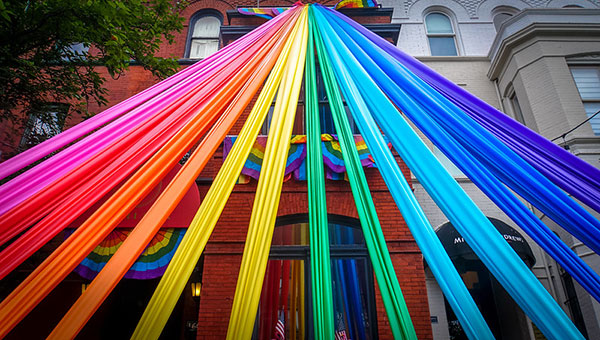COVID-19 is Quietly Having Its Way with Our LGBTQ Community

A growing body of research is showing that Black people are being hit disproportionately hard by the COVID-19 pandemic, but a lack of LGBTQ-inclusive data designed to capture the experiences of people who are both racial and sexual minorities renders many of us invisible — and puts us at even greater risk of harm.
There’s growing reason to worry that the pandemic is also particularly dangerous for diverse members of the LGTBQ and same gender loving (SGL), the affirming term some members of the Black community use to define themselves, particularly if they’re older. Unfortunately, there’s no way to know for sure because the government isn’t yet collecting the kind of detailed data that would show the extent of the problem — or provide a roadmap for mitigating the risks the disease poses to LGBTQ Americans who are already marginalized, discriminated against, and otherwise punished simply for being who they are.
Compounding the challenge of data collection is the Trump Administration’s call to force hospitals to report data to an HHS contractor instead of the Center for Disease Control, creating further opaqueness around COVID-19 data collection.
The limited data that we do have on the LGBTQ community offers a disturbing snapshot of the impact the COVID-19 pandemic has on our communities. For one, there’s the economic toll. Two in five LGBTQ people work in the five industries most impacted by the pandemic — food service, hospitals, K-12 education, colleges, and retail — compared to just one in five non-LGBTQ people, according to a survey from the Human Rights Campaign Foundation. All told, more than 5 million LGBTQ workers in these industries could be significantly affected by the pandemic.
The numbers are even worse for LGBTQ/SGL people of color. Among this group, 38 percent have had their work hours reduced, compared to 34 percent of the general population, according to the HRC. And 22 percent have become unemployed during the pandemic, versus 13 percent of the general population.
These job losses are even more dangerous in light of how many LGBTQ people already lived in poverty before COVID-19 struck. One 2019 analysisfrom the Williams Institute found that 22 percent of LGBTQ adults — including an alarming 29 percent of transgender adults — live in poverty, compared to 16 percent of straight and cisgender peers.
LGBTQ Americans also frequently lack reliable access to health care — a literal life-and-death danger in the midst of a pandemic. A national survey conducted by the Center for American Progress found that 29 percent of transgender adults had been refused care. Nine percent of LGBTQ people reported that a physician had used harsh or abusive language while treating them.
Many older members of the LGBTQ community also lack the support systems that others rely on as they age, particularly when health issues emerge. Prior to the COVID-19 pandemic, AARP found that over 75 percent of older LGBTQ people were concerned about having adequate family or social support to rely on as they age. AARP data reveals that 46 percent of gay men 45 and older live alone. LGBTQ seniors are also less likely to have adult children to look out for them, in part due to a slew of laws deliberately designed to prevent LGBTQ people from forming legally-recognized families or adopting children.
Yet we still don’t have nearly the full picture of how COVID-19 is impacting LGBTQ communities — in large part because local and federal policymakers simply aren’t collecting data on this group. So it’s easy for policymakers to ignore these Americans — and for the plight of the LGBTQ community to go unnoticed. It’s time to ensure COVID-19 data is disaggregated by sexual orientation and gender identity — in addition to race, ethnicity, and other factors. That is why we joined a coalition of civil rights and health equity groups called We Must Countcalling for the collection and release of COVID-19 demographic data because we know that when communities are invisible in the data, they are also invisible in interventions and resources.
And beyond COVID-19, we must continue to boost our data collection efforts. There are too few federal surveys with data on sexual orientation and gender identity. Counting same-sex couples in a limited number of U.S. Census Bureau surveys is not enough. Without necessary inclusion, our COVID-19 relief and recovery efforts will miss those who need it the most.
LGBTQ Americans — especially Black, Brown, and older LGBTQ/SGL people — have endured strenuous economic and health hurdles for far too long. The COVID-19 pandemic has compounded these issues. It is imperative to collect data on how COVID-19 is impacting these communities. And we must ensure that LGBTQ/SGL people are counted for years to come.
David J. Johns serves as the executive director of the National Black Justice Coalition, the nation’s leading civil rights organization dedicated to Black lesbian, gay, bisexual, transgender, queer, and same-gender-loving (LGBTQ) people.
Earl Fowlkes, Jr. serves as the President/CEO of the Center For Black Equity, Inc., the only Black LGBT international organization in the world.
Comments